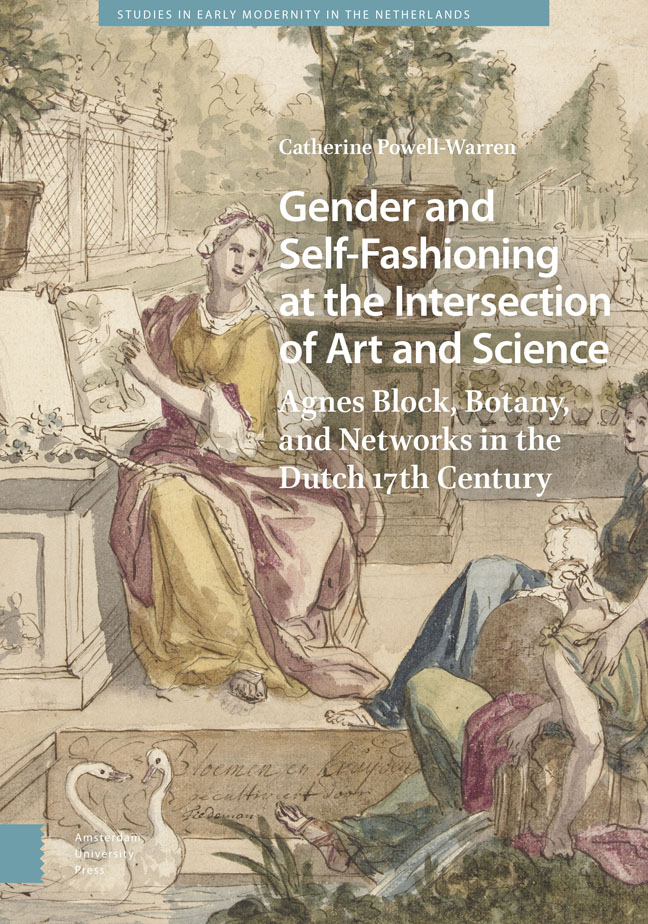 Gender and Self-Fashioning at the Intersection of Art and Science
Gender and Self-Fashioning at the Intersection of Art and Science Book contents
- Frontmatter
- Dedication
- Contents
- List of Figures and Photographic Credits
- Acknowledgements
- Introduction
- 1 Vijverhof and the Pursuit of Nature
- 2 Vijverhof in Context
- 3 Vijverhof as a Space of Knowledge Creation, Exchange, and Relationships
- 4 Becoming Flora Batava
- 5 Flora Batava in Context
- 6 The Bloemenboek and Block’s Watercolours: Self-Fashioning at the Intersection of Art and Science
- 7 The Bloemenboek as a Meeting Place and Visual Manifestation of Agnes Block’s Artistic Network
- Conclusion
- Appendix A
- Bibliography
- Index
Appendix A
Published online by Cambridge University Press: 20 February 2024
- Frontmatter
- Dedication
- Contents
- List of Figures and Photographic Credits
- Acknowledgements
- Introduction
- 1 Vijverhof and the Pursuit of Nature
- 2 Vijverhof in Context
- 3 Vijverhof as a Space of Knowledge Creation, Exchange, and Relationships
- 4 Becoming Flora Batava
- 5 Flora Batava in Context
- 6 The Bloemenboek and Block’s Watercolours: Self-Fashioning at the Intersection of Art and Science
- 7 The Bloemenboek as a Meeting Place and Visual Manifestation of Agnes Block’s Artistic Network
- Conclusion
- Appendix A
- Bibliography
- Index
Summary
Gualtherus Blok, Agneta Blok’s Vyver-Hof (1702)
Translated by Dr. C.L. (Roek) Vermeulen
1 Agneta, I’d like to remember the entertainments
2 with which you delighted my mind and always set it on fire,
3 and tirelessly provided beautiful and rich grounds
4 for praising you by means of the famous Vyver-Hof.
5 Here you most deliciously stroke and whet our senses
6 through art and labour, to love nature perfectly.
7 The fruit that the East considers it noblest nectar
8 and that the West first brought us from its lap,
9 whose pleasing scent fills the biggest halls,
10 whose beautiful appearance, which the brush is unable to copy,
11 delights the curious eye, is that exotic crop
12 flowering in winter, the golden-yellow pineapple;
13 its taste surpasses peaches from the best gardens,
14 its juice the sweetest muscatel wine.
15 Whether I praise the cereus here or the euphorbium,
16 naming its various leaves, its species, the places,
17 whether this one reached you from Asia
18 and that one originated from Africa,
19 while America grew the third one—
20 its green will never be depicted on my field of letters
21 as long as you, through the art of your watercolours
22 make nature live again, keeping it from dying.
23 One should not paint a flower [even] with the most beautiful hand,
24 Tyrian purple is too dull compared to the amaranth—
25 which laughs at carmine and through the sun’s rays
26 changes its glow, dazzles the eye and keeps it wandering.
27 May the amazing passion flower, which shows itself for a single day,
28 and the pig-sty daisy be recreated and crowned by the painter’s brush,
29 together with a thousand others that we will praise most highly,
30 of which you remain Flora, queen of flowers.
31 Ancient Cilicia may boast of its saffron,
32 but let it see a different/another field of these flowers here,
33 and industrious Flora diligently harvesting and collecting
34 those yellow dyes to cure the body.
35 Regale us with a feast of ambrosia
36 and stimulate the spirit with clove wine.
37 The scents of jasmine and myrtle fade away;
38 orange nor lemon can ever enchant us so,
39 and even the oleander, no matter how delicious its smell and great its beauty,
40 cedes to the scarlet, to pomegranate blossom.
- Type
- Chapter
- Information
- Gender and Self-Fashioning at the Intersection of Art and ScienceAgnes Block, Botany, and Networks in the Dutch 17th Century, pp. 267 - 270Publisher: Amsterdam University PressPrint publication year: 2023
